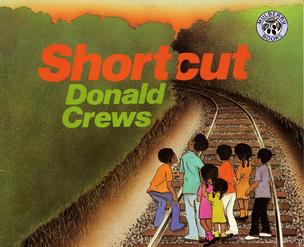Menu
-
- Home
-
About Us
-
The Approach
-
Linking Language & Literacy
-
MindWing Learning
-
Learning Resources
-
SHOP
-
Blog
-
- About MindWing
- Our People
- Contact Us
- Your Account
- Login
-
Spain (EUR €)

Setting Can be the Key to a Story
September 27, 2010 2 min read

My previous post discussed the narrative element of setting and the tendency of students on the autism spectrum (or with other language disorders) to leave out details about setting, causing listener confusion. One way to explore the importance of setting is to plan interventions using books with an integral setting- where the setting is key to the motivations of the characters and understanding of the plot.
One of my favorites in this vein is Donald Crews’ Shortcut, the story of a group of cousins who find themselves in unexpected danger after taking a shortcut home. Not only does the book serve as an excellent example of building suspense around a small moment in a personal narrative (great for students working on memoir), it also lends itself to being mapped both on a Setting Map and a literal, visual map to develop storytelling skills.
Working on such a map has always been one of my favorite projects I repeated every year with 4th graders studying memoir. Besides touching on an oft-repeated writing unit, the activity also hits on many other skills: map reading and making, organization, the pragmatics of a shared task, spatial concepts, complex conjunctions and of course, story grammar. Loosely, the lesson plan would look like this:
- Read the book interactively, with predictions, etc., and focus on interesting teachable points such as freight vs. passenger trains, etc.
- Use the SGM Setting icon magnet as a visual cue with a dry erase board to brainstorm all the important aspects of the setting of the story (tracks/shortcut, road, cutoff, path, home, etc).
- Scaffold students to create an actual map that includes all these elements.
- Use the map for retelling practice, using the SGM throughout the process and focusing on complex sentences using conjunctions such as because, so, and when.
You can see an example of a project I created with students below, using PowerPoint.
This project could be just as easily completed with chart paper and markers, but if you are interested in going the tech route, check out my screencast on how to execute this project with PowerPoint. Enjoy!
What other books do you like to use to explore the concept of setting?
Leave a comment.
Comments will be approved before showing up.
